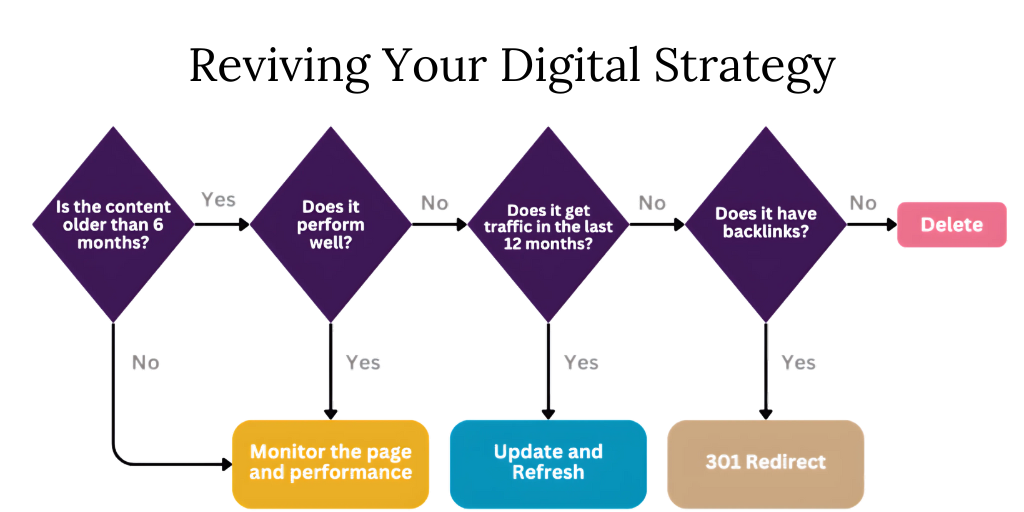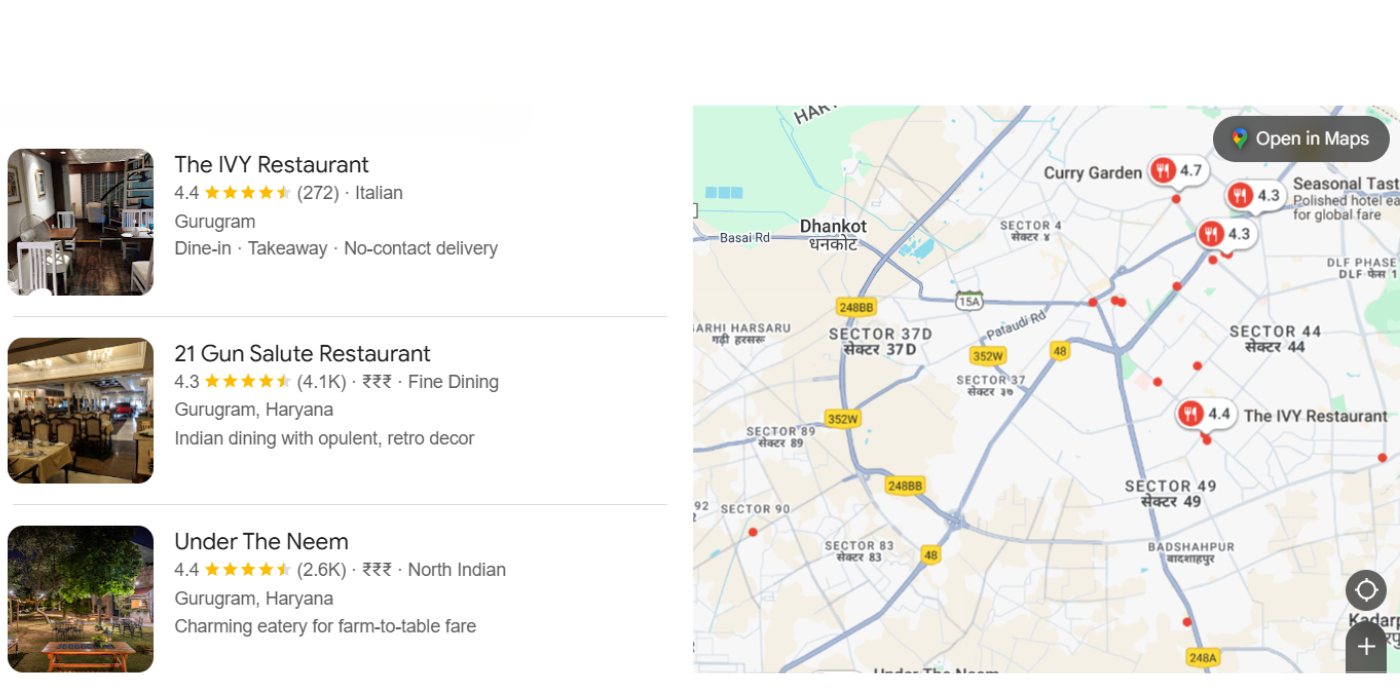Is your digital marketing strategy losing steam quietly? You’re not alone. Many businesses notice a decline in website traffic, especially after the AI overview, lower engagement, or stagnant leads, even after publishing regular content. The culprit is often not the amount of content you create, but how you manage and optimize it.
This is where a content audit plays an essential role. By systematically analyzing your existing content on your website, you can discover opportunities, improve visibility on search engines and AI platforms, and transform underperforming pages into high-performing ones.
Why Your Digital Strategy Needs a Refresh
Over time, even the best marketing strategies become outdated. Signs you might need a reset include:
- Declining organic traffic despite consistent publishing.
- Low engagement rates (bounce rates, short time on page).
- Stagnant leads or conversions despite high impressions.
- Content that feels “out of sync” with your target audience’s evolving needs.
The reality is that digital marketing strategies are not static—they evolve with search algorithms, buyer behavior, and industry trends. Content that performed well two years ago may now be hurting your visibility or credibility.
And here’s the catch: small inefficiencies compound over time. Old blogs without CTAs, outdated landing pages, or irrelevant website copy collectively drain potential leads. A content audit addresses this gap, ensuring every piece is working toward lead generation.
What is a Content Audit?
A content audit is a systematic evaluation of all the content on your website (blogs, landing pages, guides, product pages, videos, etc.) to assess performance, relevance, and alignment with business goals.
Types of content audits include:
- SEO-focused audits – analyze keyword targeting, making it user-friendly by answering the long and short tail, rankings, internal linking, and technical SEO.
- Performance-based audits – uncover which content drives the most traffic, shares, or engagement.
- Conversion-driven audits – focus on which assets generate leads, conversions, or sales.
The ultimate goal: make your content more visible, relevant, and conversion-friendly.
How a Content Audit Reveals Lead Generation Opportunities
How a Content Audit Reveals Lead Generation Opportunities
Some blog posts or web pages may be ranking well and bringing traffic, but contribute little to conversions. For example, a blog with 5,000 monthly visitors and no clear CTA is a wasted opportunity. By simply adding a lead magnet (eBook, newsletter signup, demo request) or optimizing CTAs, you can turn “silent traffic” into qualified leads.
Updating Outdated Content for Higher Visibility
Search intent evolves. Stats from 2020 no longer resonate in 2025. Old content can perform poorly because it looks outdated and irrelevant. Refreshing articles with:
- Updated keywords.
- New internal/external links.
- Fresh examples and statistics.
Immediately boosts visibility and credibility—often reviving once “dead” pages into high-performing lead generators.
Leveraging Data-Driven Insights
Numbers tell the truth. Analytics metrics like bounce rate, time on page, conversion paths, and assisted conversions reveal what’s working and what’s not. For instance, if users spend time on a blog but rarely move to your product page, it signals a CTA placement or messaging gap.
Steps to Conduct an Effective Content Audit
Step 1 – Define Your Goals
Every content audit should be purpose-driven. Ask: Is my focus on brand awareness, lead generation, SEO visibility, or user engagement? Clarity helps align evaluation criteria.
Step 2 – Inventory Your Content
List all assets in a spreadsheet: website pages, blog posts, resource hubs, videos, landing pages, gated assets. Tools like Screaming Frog or Google Analytics make this easier.
Step 3 – Measure Performance
Analyze KPIs such as:
- Traffic & rankings (Google Search Console, SEMrush).
- Conversions & lead captures.
- Engagement metrics (bounce rate, avg. session duration).
This reveals the winners, losers, and hidden gems in your content library.
Step 4 – Classify and Prioritize
Categorize each piece as:
- Keep as-is (well-performing content).
- Update (needs refresh, optimized keywords, or design tweaks).
- Repurpose (turn blogs into infographics, eBooks, or videos).
- Delete (irrelevant or duplicate content).
This process reduces clutter and focuses resources on content that actually drives leads.
Step 5 – Optimize for Lead Generation
Once optimized, content should directly fuel lead gen:
- Add compelling CTAs on high-traffic pages.
- Implement better lead capture forms.
- Update keyword targeting.
- Repurpose existing assets into lead magnets (whitepapers, checklists, webinars).
Tools & Techniques for Content Audits
A structured audit relies on the right stack:
- Google Analytics & Search Console – uncover traffic trends & indexing issues.
- SEMrush / Ahrefs – keyword rankings, backlink strength, competitor benchmarks.
- Screaming Frog – site crawl analysis (broken links, duplicate content).
- Heatmaps (Hotjar, Crazy Egg) – understand user behavior on key pages.
- Content scoring frameworks – rank each piece based on effectiveness.
Best Practices for Turning Content Audits into Lead Engines
- Conduct audits quarterly or biannually – frequent audits catch issues early.
- Align content with customer personas – ensure content speaks to real needs.
- Leverage a repurposing workflow – blogs into eBooks, webinars into social clips.
- Track ROI, not vanity metrics – measure conversions, not just impressions.
Conclusion – Turning Insights into Action
A content audit for lead generation is not a one-time exercise; it’s a scaling strategy. By uncovering hidden opportunities, updating stagnant assets, and aligning content with the buyer journey, you can transform your digital strategy from “busy but ineffective” to “focused and conversion-driven.”
👉 Ready to uncover hidden lead generation opportunities in your content? Book a free consultation with our digital strategy experts at Orange Impex today!




